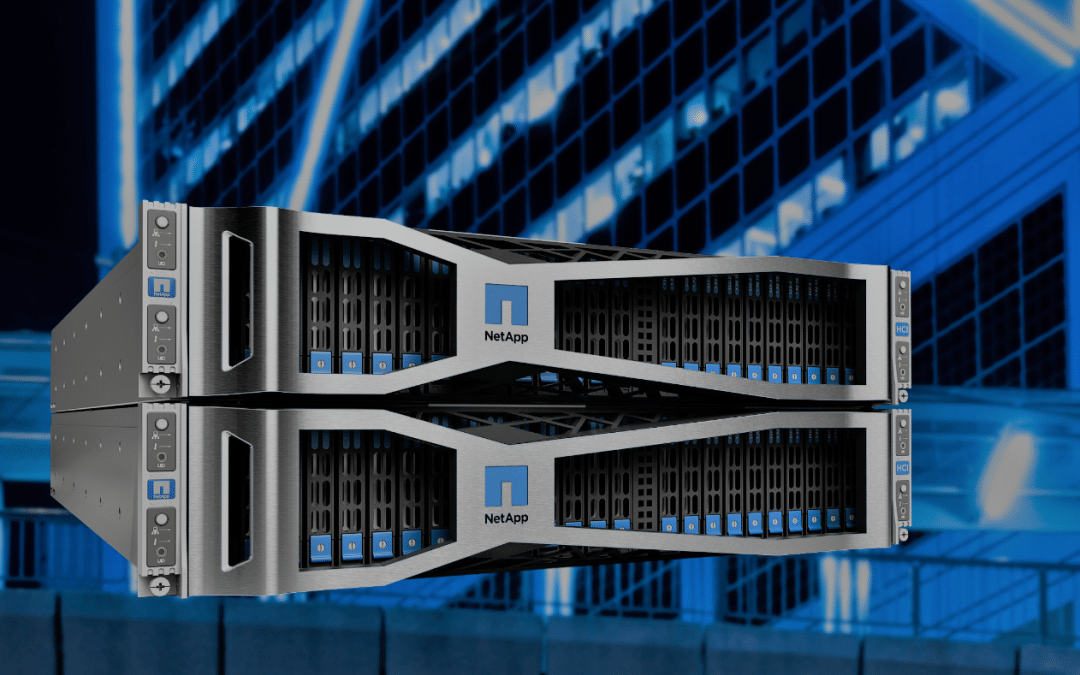Jump here to see the up-to-date analysis of top rated SDS & HCI products
Jump here to see the “What SDS & HCI Platform Landscape Report” (free download)
NetApp HCI
When NetApp announced its very own HCI platform halfway through 2017 there was a lot of commotion about whether or not it actually qualified to be labeled Hyperconverged Infrastructure. While researching NetApp HCI platform specifics the last couple of weeks for the WhatMatrix SDS/HCI category, I found myself reflecting back on this particular discussion. You might or might not remember that when we first launched the SDS/HCI category back in October 2015, we did so by introducing our definitions for Software Defined Storage and Hyperconverged Infrastructure in a blogpost. We meant for them to be as objective and vendor-agnostic as possible. Now some 2.5 years after the fact I’d like to revisit these very same definitions with you and evaluate the NetApp HCI platform against them. Let’s start by looking at the broader term, Software Defined Storage (SDS): Rule #1: The software is designed to run on commodity server hardware and makes use of the available resources therein. The center piece of the NetApp HCI solution is without a doubt SolidFire Element OS. The SolidFire storage software consumes the local storage (SSDs) residing in each storage node and leverages the available NVRAM (PCIe) and DRAM in these servers to provide basic and advanced storage services. “Local” refers to the storage devices inside the server chassis and excludes the storage devices physically installed in external disk shelves. No argument there, I would consider it a straight ‘tick in the box’. Rule #2: The solution aggregates physical storage capacity from separate systems into a single shared storage pool. NetApp HCI’s core component, SolidFire Element OS, does exactly this. All local SSDs distributed across individual storage nodes become part of the same shared block pool. From this block pool capacity is assigned to logical volumes which are then served to hypervisor hosts and bare metal hosts by means of the iSCSI storage protocol. Aggregating and provisioning this way is foundational for the ability to (massively) scale-out both performance and capacity, which solves one of the important limitations associated with traditional shared storage architectures. Again NetApp HCI seems to fit the bill nicely, so we give it another ‘tick in the box’. Rule #3: The solution offers a broad set of storage functionality (services) comparable to traditional hardware defined shared storage systems. Let’s make this a little more explicit, shall we? The broad spectrum mentioned here includes at least the following core areas and capabilities:
- Data Availability – high availability, recovery from hardware failures, disaster recovery, recovery from data corruption aka back-up/restore.
- Data Services – efficiency features like deduplication and compression, quality-of-service (QoS), data encryption, file sharing.
- Management – GUI consolidation, storage policies, programmability, non-disruptive upgrades, call-home function.
NetApp HCI provides all of the above functionality plus a few other, hence another ‘tick in the box’. NetApp HCI score: 3 out of 3, meaning the platform is compliant with the definition we originally devised for Software Define Storage (SDS). Next up is the term Hyperconverged Infrastructure (HCI) that we described one of the methods to acquire Software Defined Storage solutions. Let’s recap them for a moment:
- Build-Your-Own-Server (BYOS) = software-only solution + commodity server hardware of your choice as long as it complies to the software vendor’s HCL and/or minimum hardware specs.
- Hyperconverged Infrastructure (HCI) = software solution + commodity server hardware offered as a single package (pre-defined building blocks that are ready-to-go / turnkey).
- Reference Architecture (RA) = software-only solution + server hardware of your choice that follows the software vendor’s exact guidelines for a certain hardware configuration (also pre-defined building blocks, but still BYO/CYO when implementing this).
NetApp HCI is a single package deal containing the following ingredients: pre-defined server/storage hardware, storage software, a solution quick-deployment engine, and end-to-end solution support. When evaluating this list, the platform does contain all the necessary HCI building blocks that in the end help to achieve maximum simplicity. Verdict: NetApp HCI successfully qualifies for both SDS and HCI definitions in use by the WhatMatrix community since 2015. Many people in the industry would heartily disagree though, as they consider the “hyperconverged” part to be all about offering a “single layer” architecture where compute and storage resources are delivered by the same set of servers. We at WhatMatrix however arbitrate that the deployment architecture is just a trait of SDS/HCI solutions instead of it defining the entire category. In our comparison we distinguish between “single layer” and “dual layer” compositions. Some of the listed SDS/HCI solutions are so flexible that they provide freedom-of-choice with regard to the deployment architecture, so it’s up to the end-user to decide. Example platforms are DataCore SANsymphony, Dell EMC FlexOS and Microsoft S2D. In my honest opinion this fact alone justifies questioning the whole premise of strictly tying “hyperconverged” to “single layer” and begs for a wider approach to the subject. Whatever your personal view might be on the matter, keep your eyes peeled as NetApp HCI will soon make its first appearance in the WhatMatrix SDS & HCI comparison.
Herman Rutten – Category Consultant [SDS & HCI]
Want to be notified of important updates? Just leave your name here or follow us on twitter (@What_Matrix) and we’ll do our best.

Herman Rutten

Latest posts by Herman Rutten (see all)
- StarWind HyperConverged Appliance enters the WhatMatrix - December 3, 2019
- SDS & HCI Updates: Nutanix, NetApp, vSAN, HPE - September 3, 2019
- WhatMatrix adds Scale Computing HC3 to SDS/HCI Lineup - June 5, 2019





